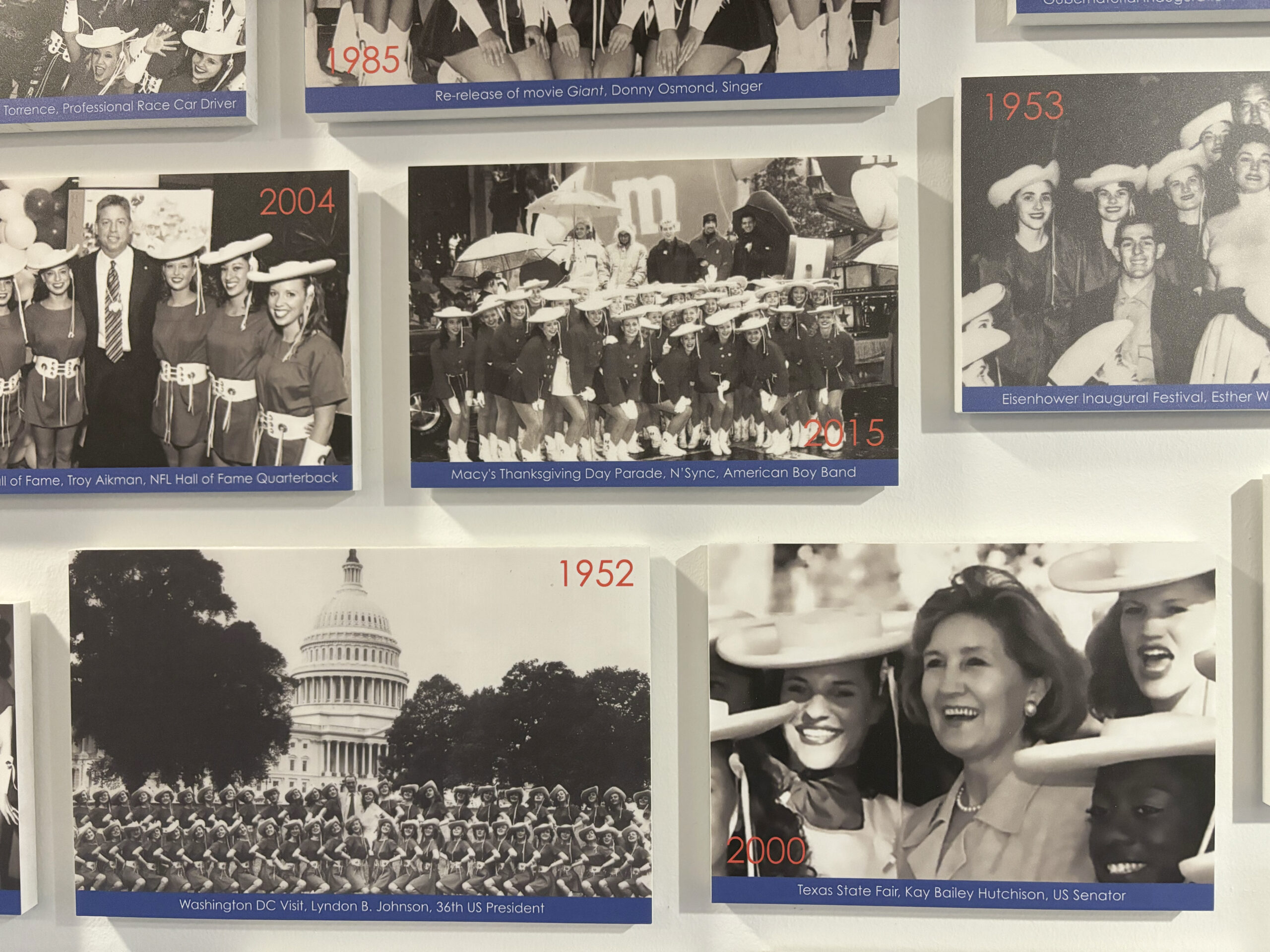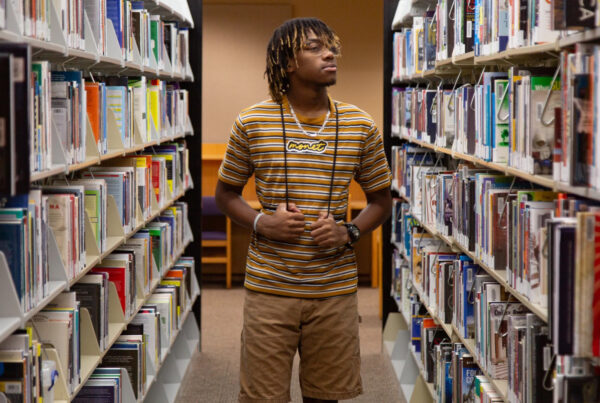When the Kilgore College Rangerettes took to the field for the first time in 1940, they wowed crowds with their precision, grace and signature high kicks.
Gussie Nell Davis, who founded the first-of-its-kind drill team, had been hired by the East Texas college to create something that would keep the crowd entertained during halftime at football games. Her vision and leadership turned the Rangerettes into a national sensation, influencing countless high school and college drill teams across the country.

Artwork of Jackie Johnson Ray striking the iconic ‘K’ pose. McKenzie Nabi/Texas Standard
Megan DeHoyos, manager of the Rangerette Showcase & Museum, recalled the story of Davis sitting in the audience during the team’s first performance.
”After it ended, the crowd was silent. Miss Davis thought, ‘I am going to be run out of town because the skirts were above the knee.’ It was pretty, you know, risque at the time. And dancing on the field, I mean, you just didn’t do that. So it was silent,” DeHoyos said. “And then they all jumped to their feet and started – just the applause was thunderous. Nobody had ever seen anything like that before, and it just caught fire.”
The museum is a treasure trove of history nestled on the Kilgore College campus. It houses everything from the original uniform to photographs, memorabilia and stories that bring the Rangerettes’ history to life as the group celebrates its upcoming 85th anniversary.
» TEXAS MUSEUM MAP: Explore more museums across the Lone Star State

“I have the best job in the world. I get to be around the organization that absolutely changed my life,” says Megan DeHoyos, manager of the Rangerette Showcase & Museum. McKenzie Nabi / Texas Standard
“I have the best job in the world. I get to be around the organization that absolutely changed my life. It molded me into the person that I am today,” said DeHoyos, who’s been with the museum for 11 years and before that was a Rangerette on the 66th line. “I get to be here every single day. I get to see the girls rehearse and perform. And, here specifically at the museum, I get to preserve our past, I get to present the present day, and I get to curate our future. This is something that is so special to me.”
DeHoyos said the museum’s creation was a labor of love by many people on campus.
“We opened in ‘79, and the oil museum opened in ‘80,” she said. “These were initiatives that were put forward to bring in tourism and just to celebrate our organizations and why the city was really – not founded, but most certainly put on the map.
















